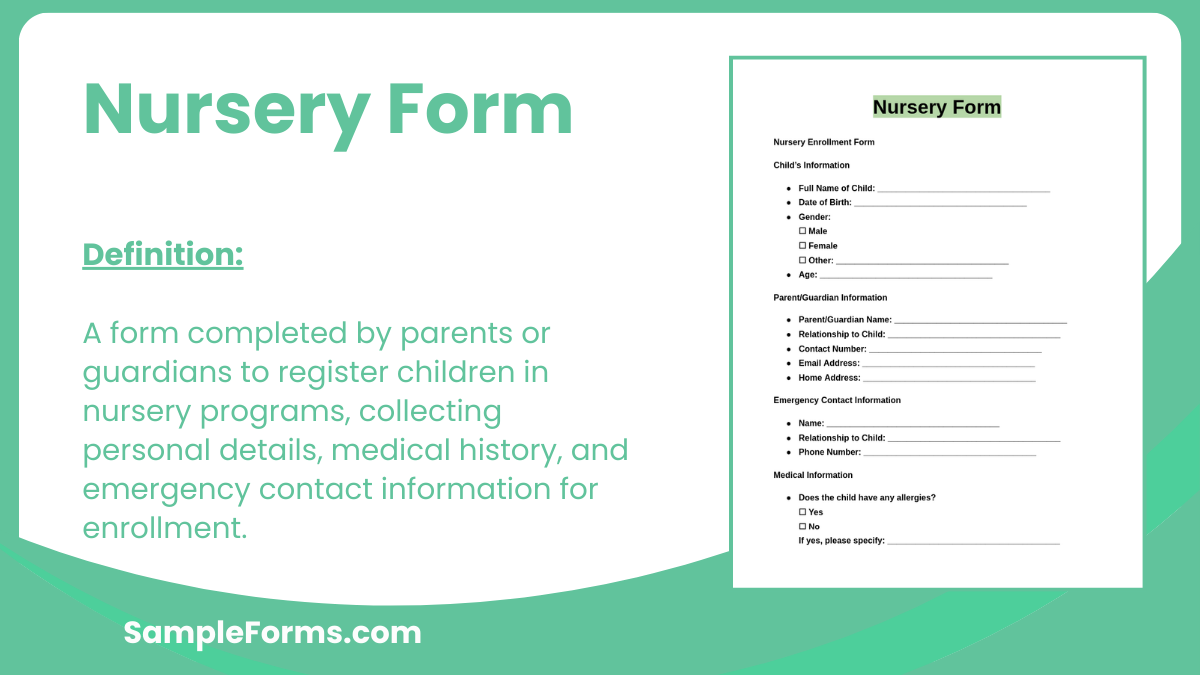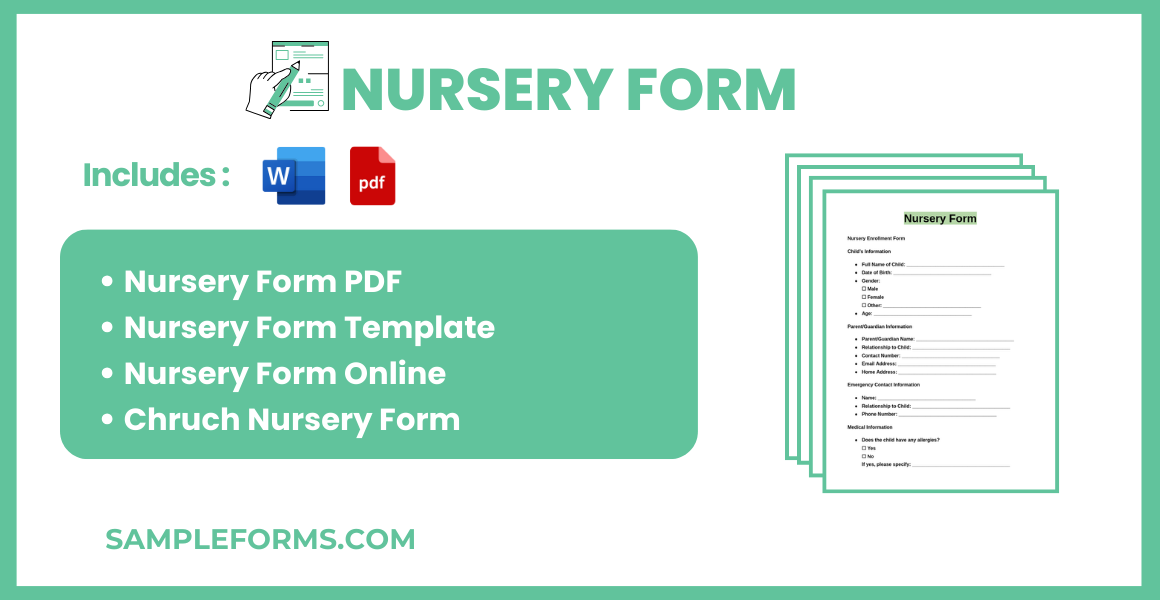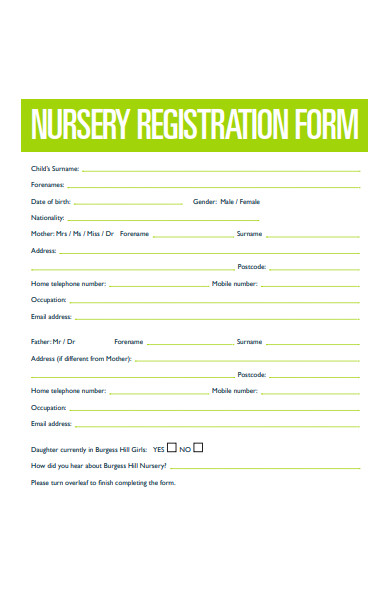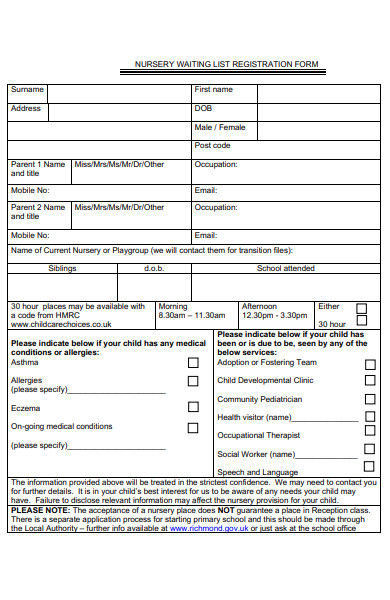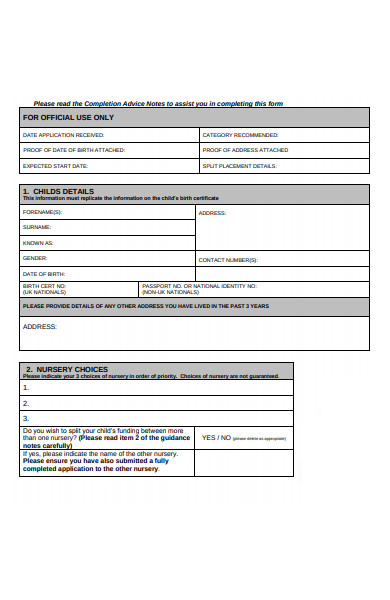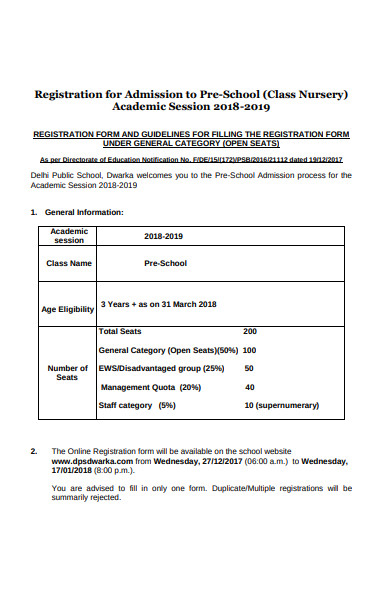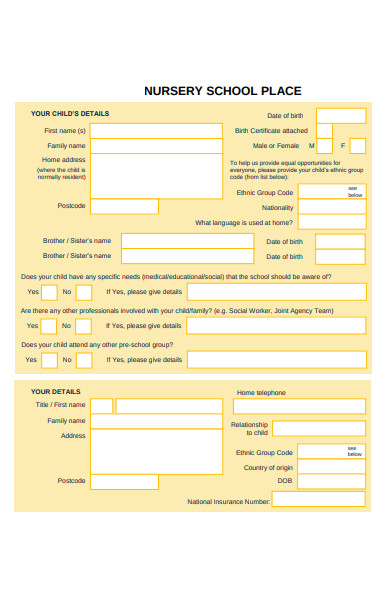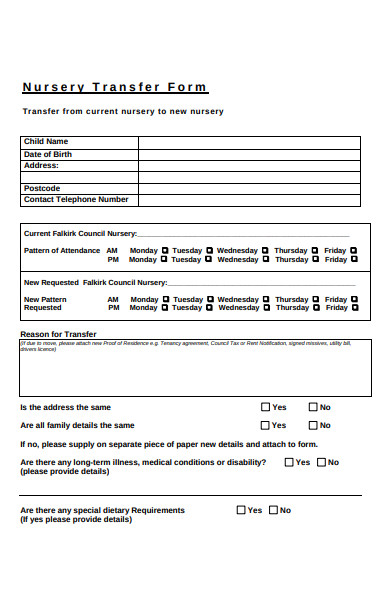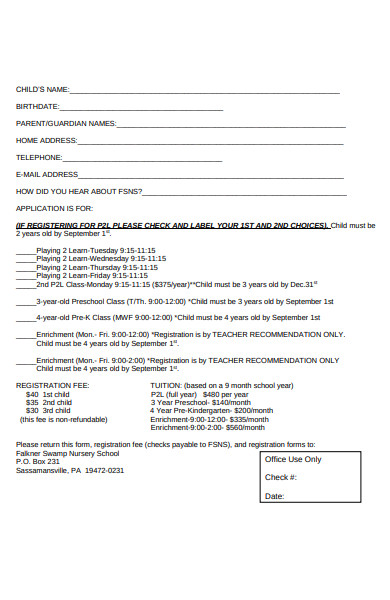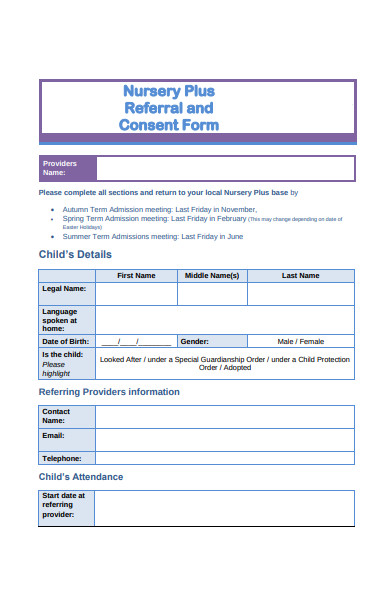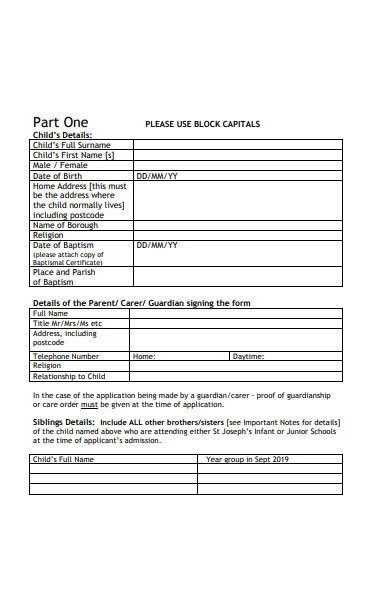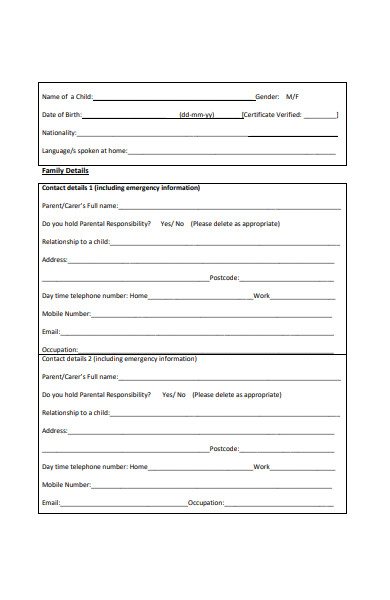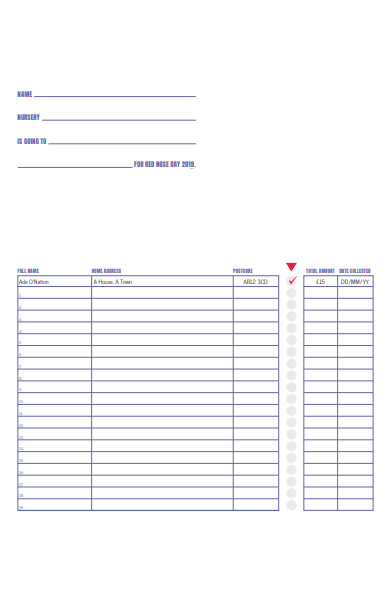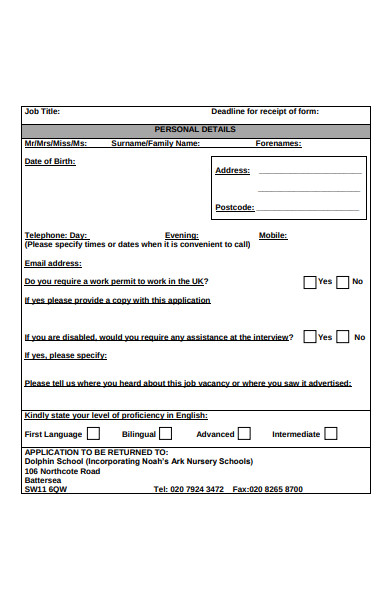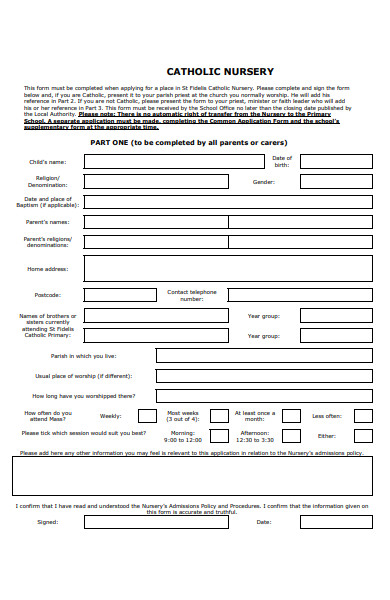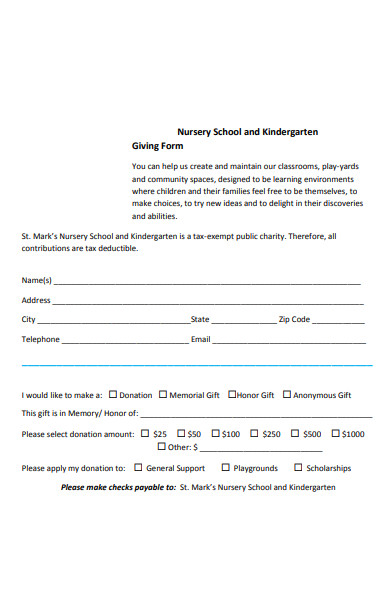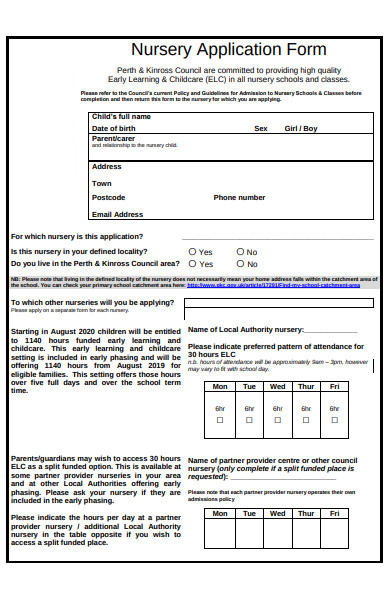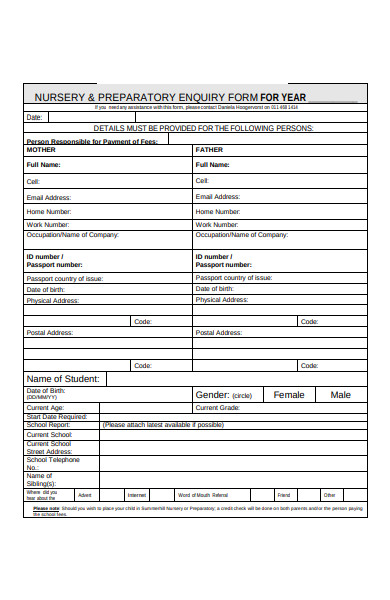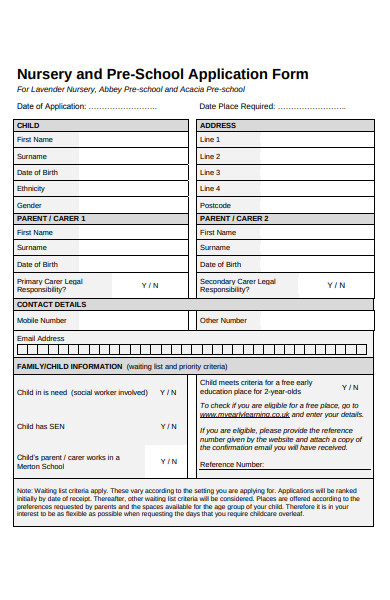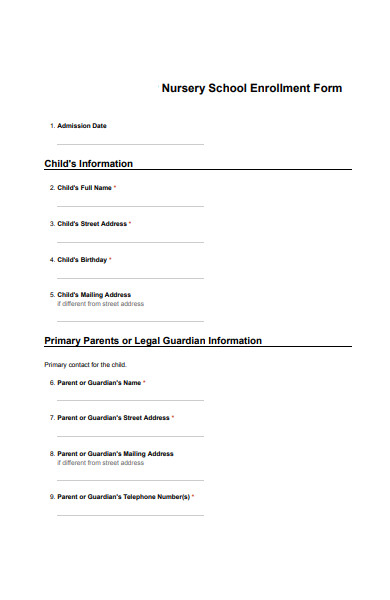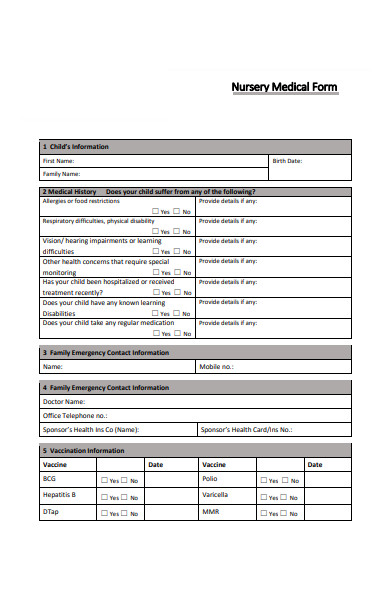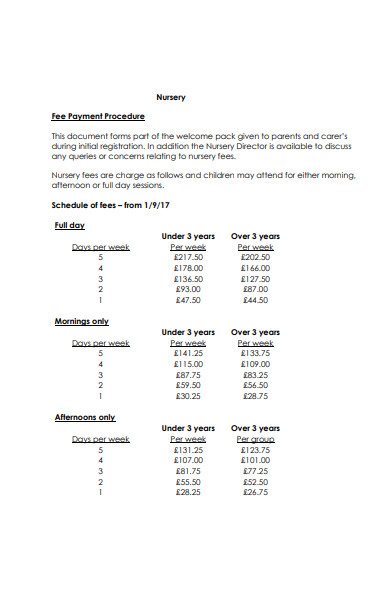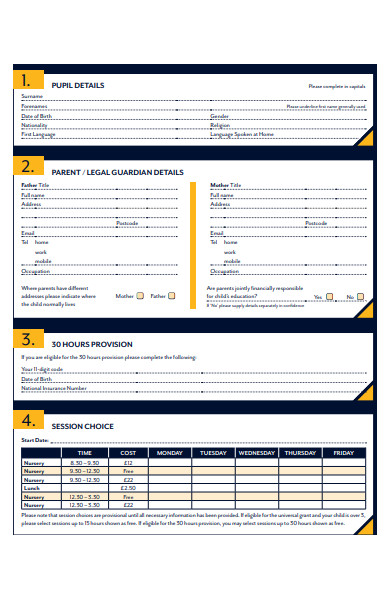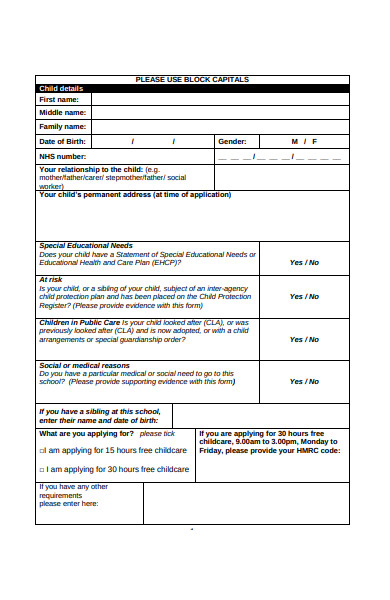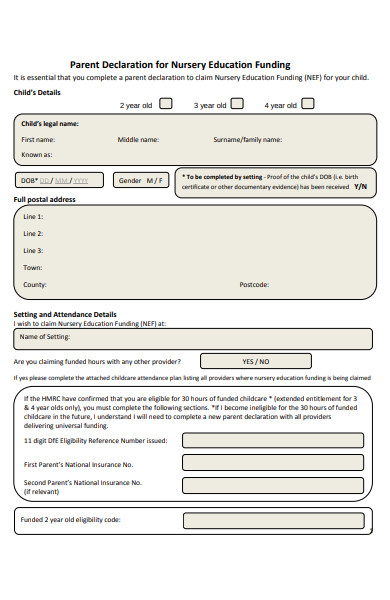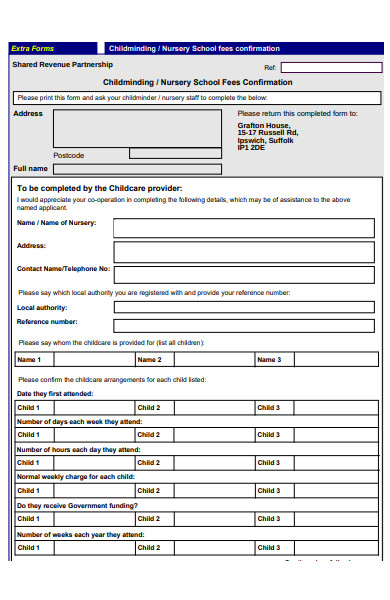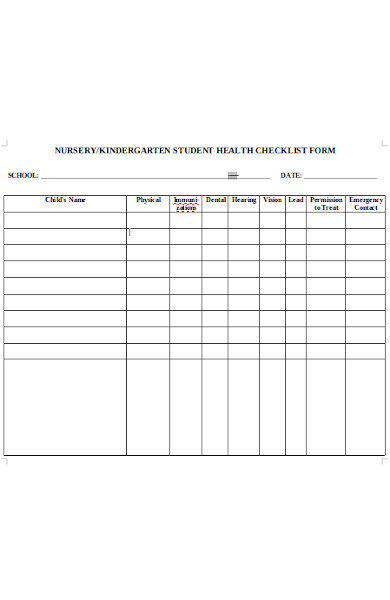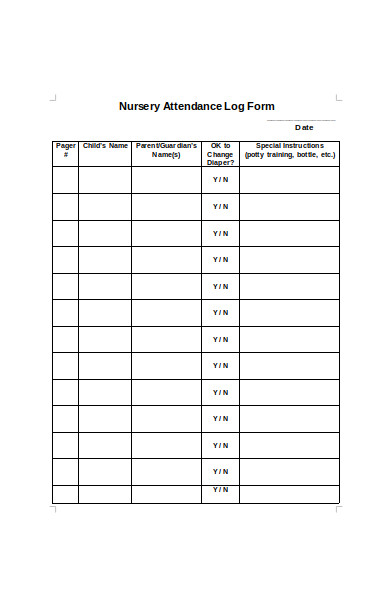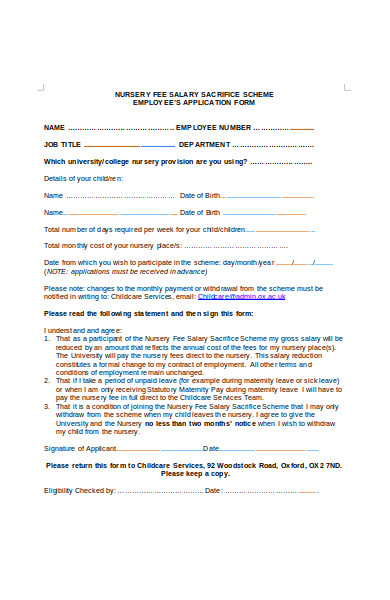Filling out a Nursery Form is crucial for a smooth enrollment process in any school. This comprehensive guide will help parents accurately complete a School Form or Primary School Admission Form with ease. The Nursery Form captures vital information, including the child’s details, health conditions, and emergency contacts, ensuring that schools have all the necessary data for a child’s safety and well-being. Understanding these forms is essential for parents to avoid delays in the admission process. In this guide, we’ll explore different examples and tips to ensure that your Nursery Form submission is flawless.
What is Nursery Form?
A Nursery Form is a document used by schools to collect essential details about a child applying for admission. It includes information like the child’s full name, birth date, health conditions, emergency contacts, and parent details. Schools use this form to ensure that they have all the necessary data for the child’s well-being, safety, and smooth integration into the school environment.
Nursery Format
Nursery Enrollment Form
- Child’s Full Name:
[Enter child’s full name] - Child’s Age:
[Enter age in years and months] - Date of Birth:
[Enter date of birth] - Gender:
[Select: Male, Female, Other] - Home Address:
[Enter full address] - Parent/Guardian’s Name:
[Enter parent’s/guardian’s full name] - Contact Number:
[Enter phone number] - Email Address:
[Enter email address] - Emergency Contact Information:
Name: [Enter emergency contact name]
Relationship: [Specify relationship]
Phone Number: [Enter phone number] - Child’s Allergies or Medical Conditions:
[Specify if any] - Preferred Nursery Start Date:
[Enter date] - Special Instructions for Child’s Care:
[Enter instructions if any] - Authorization for Pick-Up:
Name(s) of Authorized Person(s): [Enter name(s)]
Relationship: [Specify relationship] - Signature of Parent/Guardian:
[Sign and date]
Nursery Form PDF
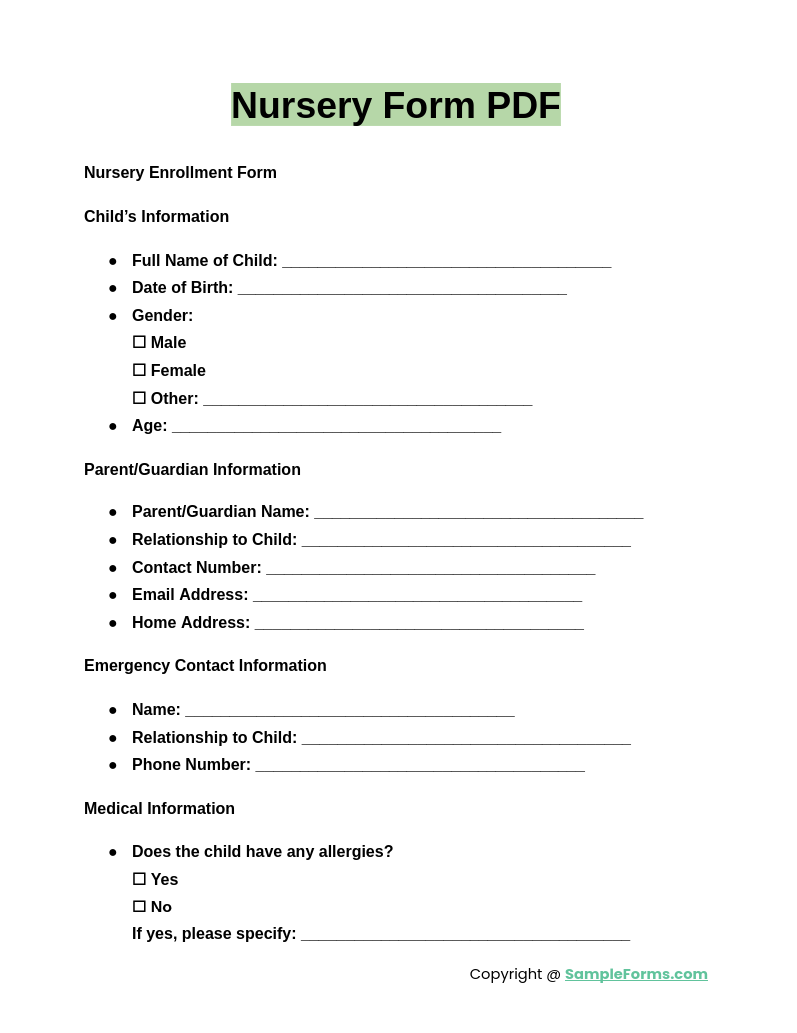
A Nursery Form PDF provides a ready-to-use format for parents to fill out essential details like contact information, health conditions, and emergency contacts. This form simplifies admissions for preschools and is also useful when completing a Preschool Observation Form.
Nursery Form Template
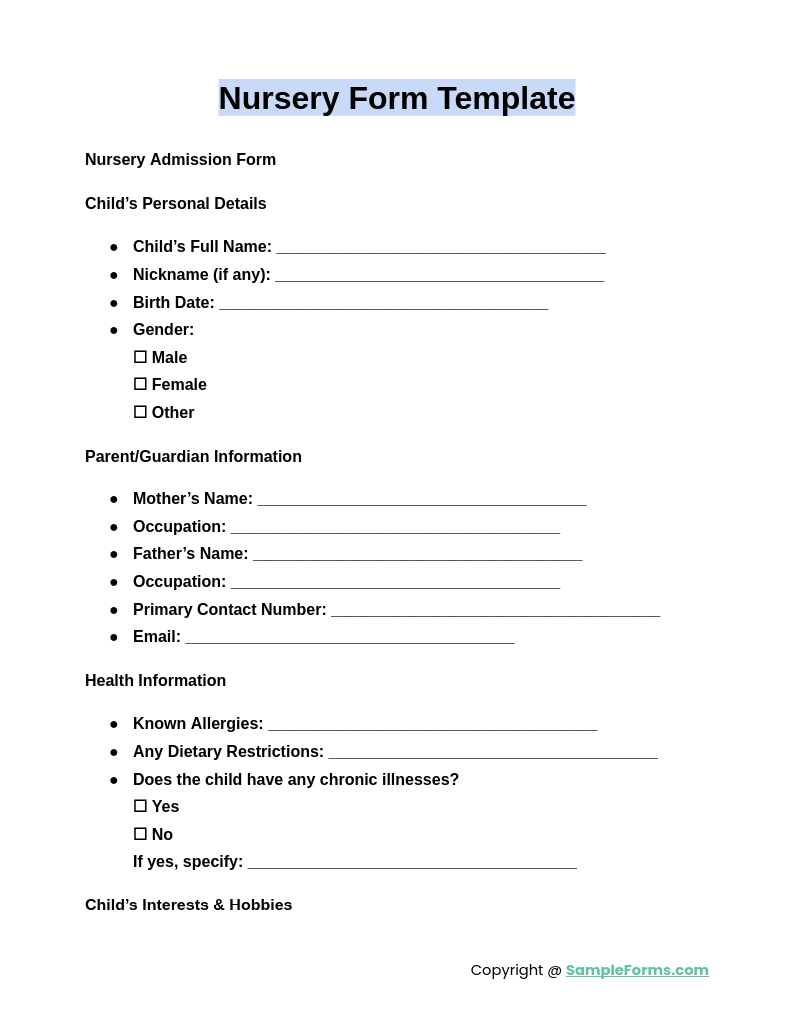
A Nursery Form Template offers a structured layout that schools can customize to collect student information efficiently. It includes fields for personal details, health records, and guardianship details, streamlining the enrollment process. This template is handy for creating a Preschool Assessment Form.
Nursery Form Online
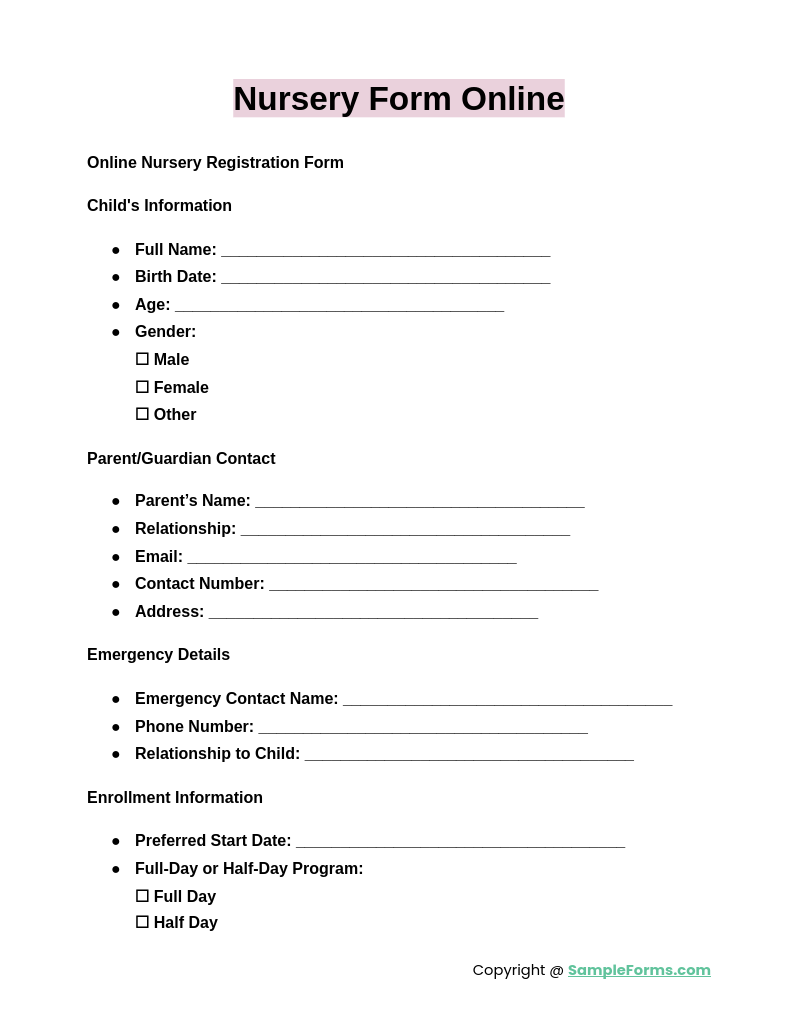
Filling out a Nursery Form Online allows for faster, paperless registration, making it convenient for busy parents. Schools benefit from quicker processing and data management. It’s especially beneficial for handling requests like a School Transfer Form seamlessly.
Church Nursery Form
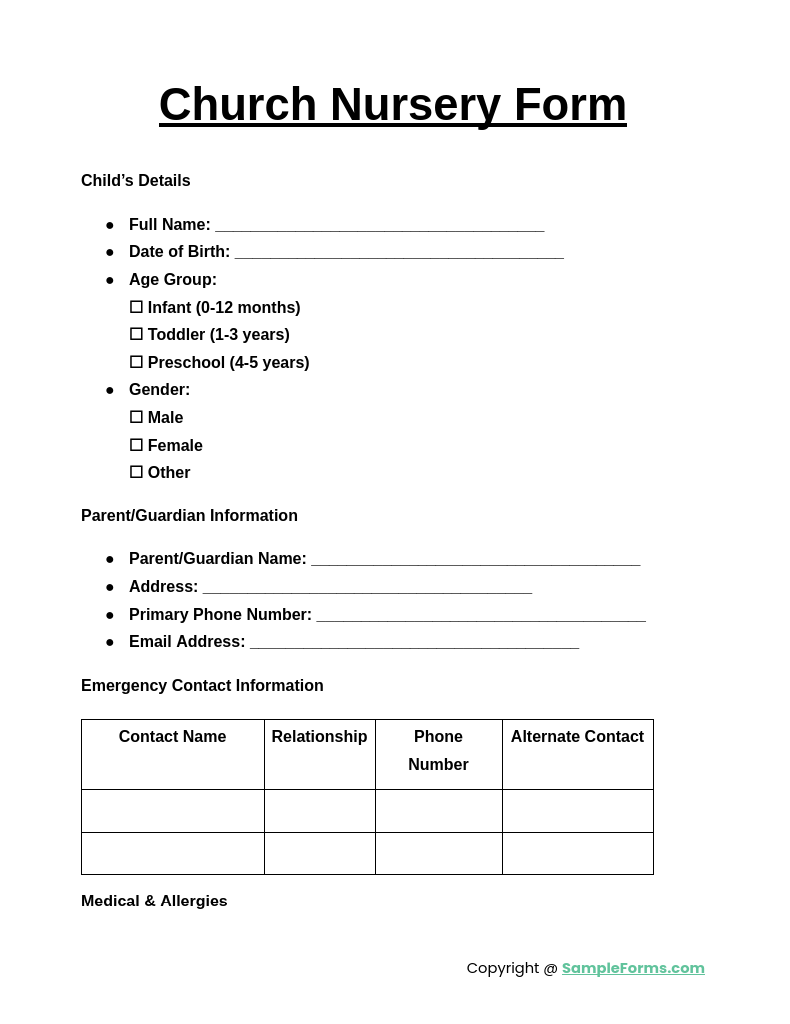
A Church Nursery Form is used to register children for church nursery programs. It gathers details about allergies, emergency contacts, and authorized pick-up persons, ensuring child safety. Often used alongside a School Application Form or School Registration Form for community events.
Browse More Nursery Forms
1. Nursery Registration Form
2. Nursery Entry Form
3. Nursery Application Form
4. Nursery Waiting List Form
5. General Nursery Form
6. Nursery Academic Session Form
7. Nursery School Place Form
8. Nursery Transfer Form
9. Nursery Admission Form
10. Simple Nursery Form
11. Nursery Referral & Consent Form
12. Nursery Policy Form
13. Basic Nursery Form
14. Nursery Sponsorship Form
15. Nursery Job Form
16. Catholic School Nursery Form
17. Nursery Kindergarten Giving Form
18. Formal Nursery Form
19. Nursery Preparatory Enquiry Form
20. Nursery and Pre School Form
21. Nursery School Enrollment Form
22. Nursery Medical Form
23. Nursery Fee Payment Form
24. Nursery Child Information Form
25. Primary School Nursery Form
26. Nursery Education Funding Form
27. Nursery School Fees Confirmation Form
28. Nursery Health Checklist Form
29. Nursery Attendance Log Form
30. Nursery School Academy Form
31. Nursery Fee Salary Sacrifice Form
When should I send my child to nursery?
Sending a child to nursery helps in their early social and cognitive development. The ideal age for nursery varies per child.
- Age Readiness: Most children start at age 3, but some may join earlier if developmentally ready.
- Social Skills: Nursery encourages social interaction and teamwork, preparing kids for school.
- Emotional Growth: Supports emotional resilience through structured activities and routines.
- Independence: Develops self-reliance by learning to follow instructions and complete tasks.
- Preparation for School: Essential for a smoother transition to School Budget Form.
What documents are needed to accompany a completed Nursery Form for enrollment?
Supporting documents ensure the school’s compliance with regulations and the child’s safety. Always check the specific school’s requirements.
- Birth Certificate: Confirms the child’s age and identity.
- Immunization Records: Required for health and safety compliance.
- Proof of Address: Validates residency using a School Clearance Form.
- Parent/Guardian ID: Confirms legal custody.
- Emergency Contacts: Important for unforeseen situations during school hours.
What are the five levels of education?
Understanding educational levels helps parents plan their child’s academic journey effectively. It ensures readiness at each developmental stage.
- Early Childhood Education: Nursery and preschool focusing on foundational skills.
- Primary Education: Typically ages 6-11, involves core subjects and is critical for issuing a School Report Form.
- Secondary Education: Covers middle to high school, preparing students for advanced studies.
- Tertiary Education: College or university level focusing on specialized courses.
- Adult Education: Continuous learning beyond formal schooling for personal or career development.
Why is it important to provide accurate residential details on a Nursery Form?
Accurate addresses are essential for communication, safety, and compliance with school policies, ensuring smooth interaction with parents.
- Emergency Communication: Correct addresses enable prompt communication in emergencies.
- Transport Arrangements: Helps plan routes for school buses or pickups.
- Eligibility Verification: Required for enrollment in specific districts, like when completing a School Proposal Form.
- Parental Notifications: Ensures timely delivery of notices or progress reports.
- Data Accuracy: Prevents delays in admission processing and follow-ups.
How do you update a child’s allergies or medical conditions on a Nursery Form?
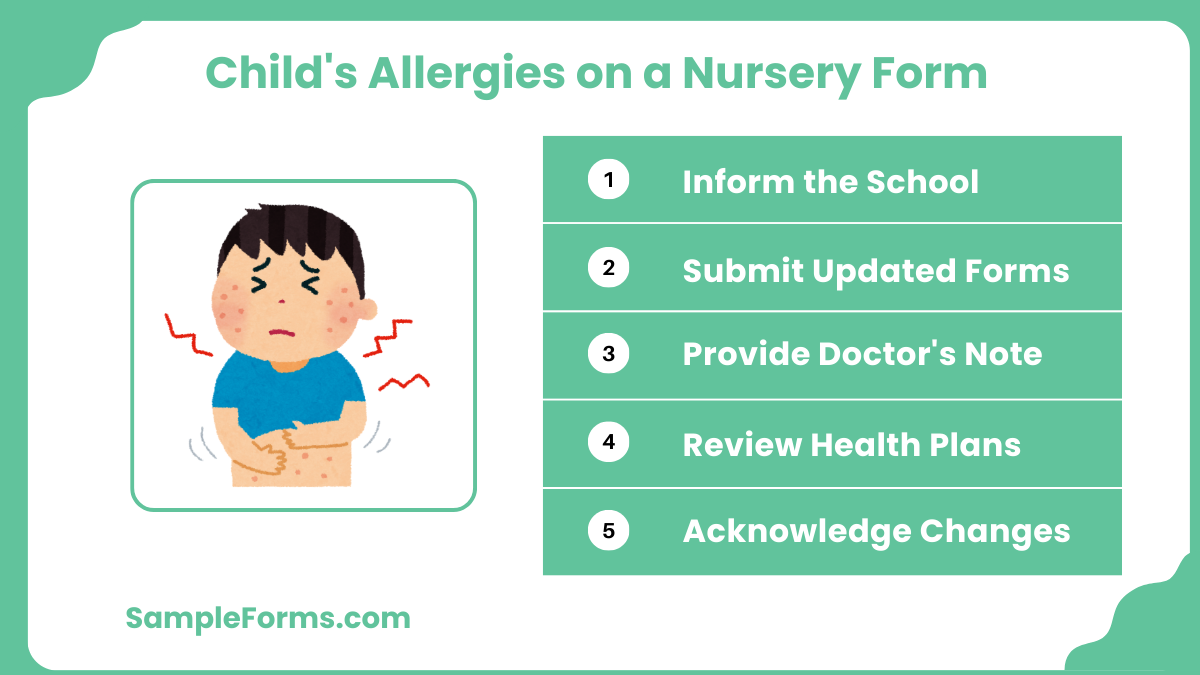
Updating medical information ensures the school can respond effectively to a child’s health needs, promoting a safe environment.
- Inform the School: Notify administrators immediately about any changes.
- Submit Updated Forms: Fill out a new section or form, such as a School Counseling Form, for accurate records.
- Provide Doctor’s Note: Include a physician’s confirmation if necessary.
- Review Health Plans: Ensure the school’s care plan aligns with new information.
- Acknowledge Changes: Confirm updates with the school to keep records current.
Is nursery school free in USA?
Nursery education is not universally free in the USA. Public programs may offer free preschool in certain areas, but private options typically require a Child Care Application Form.
What do Americans call a nursery?
In the USA, a nursery is often called “preschool” or “daycare,” where children under five receive early education and care, similar to completing a School Information Form.
What is a nursery in a hospital?
A hospital nursery cares for newborns after birth, ensuring their health and well-being. It’s different from education-related settings like a School Physical Form.
What is the purpose of a nursery?
Nurseries provide a safe environment for early childhood development, focusing on social, emotional, and cognitive skills to prepare children for primary school, alongside regular School Assessment Form evaluations.
How should parents fill out the dietary requirements section on a Nursery Form?
Parents should accurately list allergies, intolerances, and dietary preferences to ensure the child’s safety. Include specifics like ingredients to avoid, as you would in a School Risk Assessment Form.
How does the Nursery Form help staff prepare for a child’s first day?
The form collects essential details like emergency contacts, allergies, and routines, helping staff plan a smooth transition, similar to preparing a School Budget Form for resources.
What is the significance of the signature section on a Nursery Form?
A signature confirms the accuracy of the provided information and serves as a formal agreement, much like signing a Child Support Agreement Form for accountability.
How is a Nursery Form used to ensure compliance with childcare regulations?
It documents essential details like immunizations, allergies, and emergency contacts, aligning with standards similar to a School Evaluation Form for regulatory compliance.
How can a Nursery Form be used to collect information about a child’s interests and hobbies?
Parents can list activities their child enjoys, helping teachers personalize learning experiences, much like insights gathered through a School Complaint Form for student feedback.
What should parents do if they need to update their contact details on a Nursery Form?
Submit an updated School Receipt Form with new contact information to the nursery administration, ensuring all records are current for communication and emergencies.
The Nursery Form: Sample, Forms, Letters, Use guide provides detailed insights into completing admission forms efficiently. With examples to assist parents, the process becomes straightforward, minimizing delays. Whether you need to fill out a Minor Child Power of Attorney Form for special cases or a general admission form, this guide covers all the essentials. Accurate form completion ensures your child’s seamless entry into the desired nursery or primary school.
Related Posts
FREE 10+ Printable Summer Camp Registration Forms PDF
FREE 14+ Mentee Evaluation Forms PDF
FREE 6+ Model Consent Forms in WORD PDF
FREE 9+ Physical Assessment Form Samples in PDF WORD
FREE 7+ Sample Contractor Warranty Forms in PDF WORD
FREE 7+ Stock Requisition Forms in PDF DOC
FREE 8+ Sample Health Certificate Forms PDF
FREE 18+ Hotel Check-In Form Templates in PDF WORD
FREE 14+ Sample Event Request Forms PDF
FREE 5+ Restaurant Enquiry Forms PDF
FREE 7+ Sample Contract for Deed Forms in PDF WORD
FREE 10+ Equipment Release Form Samples in Sample, Example ...
FREE 7+ Client Assessment Form Samples in Sample, Example ...
FREE 8+ Sample School Counseling Forms PDF
FREE 12+ Nutrition Assessment Forms in WORD PDF
